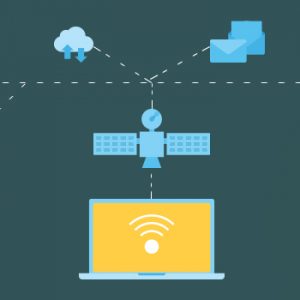Managing cold chain distribution is a tough ask. Top honchos generally refer to the monthly waste numbers as a barometer for measuring the efficiency of their end-mile distribution network. For an ice-cream company, this parameter becomes even more critical as it provides valuable feedback about the operational effectiveness.
Ice cream is an extremely perishable product which needs to be preserved in the prescribed conditions right from the source of production to the end point of consumption, which can be more than a 100 kms apart. Assisted by proven manufacturing practices and cold chain expertise, reefer vans transport ice-cream smoothly from the production unit to the last-mile cold room. Here is where the push cart conundrum comes into picture. Push carts help to sell ice cream directly to consumers on the move and are not restricted to a location like brick-and-mortar stores. However, optimizing push-cart operations is easier said than done. With IoT, it’s possible to get a handle on this problem.
Location and temperature monitoring
Experience tells us that basic cart refrigerator temperature checks don’t suffice. It’s crucial to continuously monitor pushcart locations and temperature constantly. Conventional cart monitoring methods are laborious, time-consuming and often unfruitful. IoT-powered GPS and temperature monitoring reduces the reliance on this traditional practice and simultaneously minimizes the dependency on human intervention. It’s possible to have 100% visibility of the carts location and refrigerator temperature.
Cart-driver management
Managing the cart drivers is another tricky proposition for cold-room managers. From getting the cart batteries charged to having the carts out at their respective location of sale on time, it’s a tight rope walk all along. Historical data analysis defines the standard benchmarks for cart charging duration and tentative backup duration. Subsequently, the IoT application helps establish a charging schedule and along with the route plan. The result is optimized cart utilization and a disciplined team aligned with its schedule.
Territorial distribution and calendar based reordering plans
Just as one size doesn’t fit everyone, one distribution plan doesn’t cater to the tastes of all demographic groups and locations. Customers are spoilt for choice and this availability of options is the governing factor behind how the sales pan out for very location-pushcart combination. There are several options: Vanilla vs strawberry, cups vs cones, single scoop vs double serving, entry level vs premium. Example: Entry level SKUs will be popular in areas like schools and colleges where students have a low purchasing power. But premium SKUs will be popular in areas around offices where the purchasing power is higher. Another example will be the consumption pattern as per the calendar month. Then there is the variable called demand. It varies not only with the location, but also with the calendar month. Consumption during the summer months easily beats the consumption during winter and monsoon. Example: The analytics powered software does the math and comes up with and automated inventory plan for every location, taking into account factors like consumer demographics, time of the year, past sales data and future forecast.
Looking at the above examples, it’s not very hard to see the potential benefits which can be achieved by employing IoT based automation for push-cart operations.





